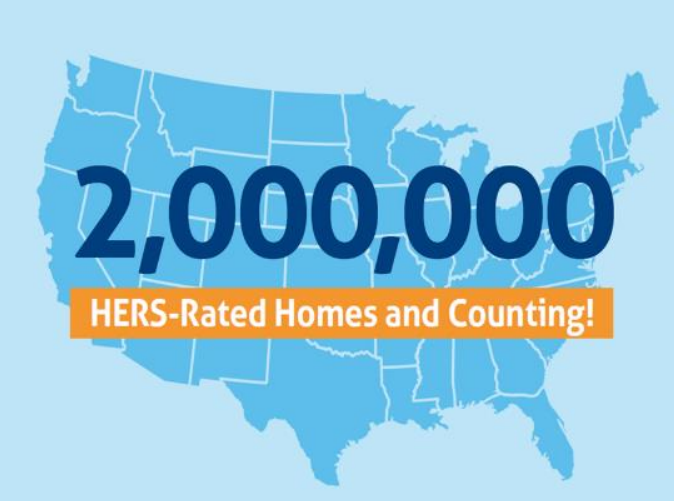By Christina Rohrbacher | Mon, January 14, 19
Do you ever get the feeling of pure excitement and relief all at once? Well that is how I felt on December 7 at my first ever Home Energy Labeling Information eXchange (HELIX) Summit. I was relieved that the day had finally arrived, and excited to see how it would play out.
As a NEEP employee for a year now, I have been privileged to be part of the HELIX team. The Summit felt like the perfect culmination of all the hard work we put into this project. From topics like new data sources and partners to voluntary and mandatory labeling policies throughout the United States and beyond, the Summit allowed for attendees to take a deeper dive into how HELIX works and take a look at project’s future.
The HELIX Summit kicked off with a tour of the National Grid Energy Innovation Hub. One attendee, surveyed anonymously following the Summit, stated, “Thank you for organizing the tour of the Energy Hub - it was a great, fun addition to the event. The student interns were very informative!” And they were right; the interns who helped attendees navigate the Hub truly allowed for an immersive experience. And, though the doughnuts from Knead Doughnuts in the heart of Providence weren’t the main draw to the tour, they were certainly an added bonus.
For the rest of this blog, we’ll take a look at highlights from each session.
What is this HELIX I Keep Hearing About?
The first session of the day was an introduction to the project and featured a demonstration of how the database works. In a talk show style skit, NEEP’s Samantha Caputo interviewed Veronique Bugnion of ClearlyEnergy to show attendees how HELIX works and how the flexible capabilities of the database make HELIX a customizable solution for various stakeholders. This informative session truly set the stage for the rest of this exciting day.
Data, Data Everywhere
This panel discussion provided a survey of the types of data in the marketplace, current trends, and ways that this data is transforming the market. The main takeaway from this session was that there are many different data fields available for comparing energy efficiency in homes and data providers are working to make this data available to potential homebuyers and sellers.
Speakers emphasized the importance of working together. Madeline Salzman from U.S. DOE stated there are over 100,000 Home Energy Scores (HES) to date. These are mainly for existing buildings, whereas the RESNET HERS scores, discussed by Ryan Meres of RESNET, are primarily for new homes. There are over two million HERS scores in the United States, with 23 percent of all new homes in 2017 being HERS rated. The combination of these two types of scoring systems creates a wealth of data available for the HELIX database, allowing homebuyers, sellers, owners, and even renters to have access to this valuable information.

Pictured Above: Graphic showing total number of HESs to date, and how scores can improve on average with retrofits mainly through air sealing and insulation installation. A high score means a more efficient home.

Pictured Above: Graphic displaying the number of HERS-Rated homes in the United States. 23% of all new homes in the United States received a HERS rating in 2017.
This is why HELIX and its auto-populating feature are so important for ensuring not only the integrity of the data that is transferred, but also the transparency of the data in the real estate market. Other home energy labels are also growing, such as the Pearl Certification and USGBC LEED for homes. This data would allow home buyers to compare homes, real estate agents to market those homes, and appraisers to utilize this information to properly value homes that disclose this information.
From Voluntary to Mandatory
This panel discussion covered the policies and programs – either voluntary or mandatory – at being implemented at the state and local level. Panelist covered the challenges and benefits they are seeing with the home energy labeling programs.
Sharing best practices shined as the main takeaway from the speakers’ presentations. Lisa Timmerman discussed Portland, Oregon’s first-of-its-kind in the United States Home Energy Score disclosure ordinance that requires sellers or homebuilders to disclose the score at or before listing the home. It is displayed in the real estate listing as well as in the home for prospective buyers. This ordinance provided a great learning opportunity in regards to the real estate community’s response to it. Many expressed concern that it unfairly impacts low income homeowners with sub-standard homes. The reality, however, is that disclosure of energy information to low-income buyers allows for better financial planning.
Once we get information about the outcomes and successes of the Portland, Oregon disclosure ordinance, other cities can use that information to create their own ordinances. Until then, we can look to Europe’s mandatory programs for best practices and proof of concept. Lauren McNutt from Dunsky Energy Consulting highlighted that in France, a 37 percent rate for home improvements occurred as a result of the mandatory program. This points to the effectiveness of such programs.
Julia Dumaine from Connecticut Department of Energy and Environmental Protection (CT DEEP) expressed how important workforce development is to the success of any program, but especially a voluntary one. Proper training of Home Energy Score raters around the importance of a score can dramatically increase the levels of participation in a program that requires opt-in language. Opt-in language means that the rater must ask the homeowner if they want to disclose their Home Energy Score to the state. If a homeowner is not educated correctly about the importance of the score and what it means, they will be more likely not to participate. In the case of Connecticut, this means that the home is not scored at all.
Throughout each presentation, speakers noted that mandatory programs have the most positive effects in transforming the market toward generating retrofits but that voluntary programs are a good first step. While states work toward mandatory programs, however, implementation of voluntary programs are a way to gain traction in this space. Ian Finlayson, MA DOER, cautioned that voluntary programs fall shy of generating scale necessary for proof of concept for these programs, which is critical for increased adoption of such labeling or rating programs. While states continue to move towards scale, it’s important to remember that the European case offers much insight and evidence of success.

Real Estate Professionals: On the ground work to advance residential energy efficiency
This session was more loosely organized so that panelists could bounce their experiences off each other while the moderator, Craig Foley, could ask questions in between. The panelists included real estate professionals that are working as “boots on the ground” in the world of residential energy labels and ratings.
This packed panel covered the nitty gritty of what it looks like to transform the residential real estate market on a daily basis. Each speaker discussed their role in energy efficiency and real estate from appraisals, to lending, to the real estate agents who help people to purchase their homes. One attendee described this session as, “well-organized with great speaker diversity”.
Gayle Oberg from Little River Realty in Vermont talked about how difficult it can be to market specific information about energy efficiency or renewable energy when this information is not readily available. Rob Lynch from Maine Appraisal Institute Chapter discussed the “Residential Green and Energy Efficiency Addendum” and the importance of accurately reflecting energy efficiency data in this form in order to provide a better appraisal of that home. HELIX can ensure that real estate agents can see this information in the MLS and that appraisers can find this information and include it in the Green Addendum.
This session helped Summit attendees to better understand the gaps between the real estate market and energy efficiency. It points to the importance of HELIX in closing those gaps. While we can understand there will be challenges associated with the transition, HELIX can make that transition more seamless.
Key Takeaways
The biggest takeaway from this event is the fact that HELIX really is the missing piece to the real estate and home energy data puzzle. Without easy access to the information necessary to understand a home’s energy use, homebuyers and real estate professionals will not be able to properly value energy efficiency, and ultimately transform the market to encourage retrofits.
HELIX is now entering a new phase by working to automatically populate MLS listings with not only energy rating and labeling information, but also solar photovoltaic (PV) information. This brings renewable energy and energy efficiency together in one place for real estate professionals, as well as homebuyers and sellers. In the future, it will no longer be a mystery what a home’s energy use profile is. It will be normal for people to ask about the energy use of a home during the real estate transaction, and for real estate agents to disclose this information because it will be readily available.
Each session was interlinked with the excitement of attendees as well as the corny jokes made by various speakers, characterized by what I call the “groan factor” of the audience. The networking of attendees as well as their questions showed how necessary HELIX is to transforming the real estate industry to value energy efficiency, and that transparency is urgently wanted and needed by those involved in every residential real estate transaction.
All slides from the Summit can be found on the HELIX Summit page.
For the HELIX Summit, NEEP partnered with TripZero to offset the carbon footprint of the travel made HELIX Summit attendees. TripZero funded reforestation and renewable energy projects to offset a total of 32 tons of CO2, the equivalent of the electricity consumed by six average U.S. homes for one year or driving 78,240 miles in an average car.
NEEP will partner with TripZero on additional future events, ensuring that the travel generated by our workshops can be compensated with certified carbon offsets.
